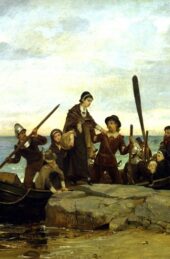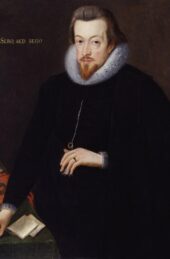The Slipperiness of History
I was really interested to read recently that the coded letters of Mary Queen of Scots have been deciphered by modern computer scientists and decoders. Undoubtedly this will give us hitherto unknown insights into what we know about her and her life. Historians and historical fiction authors may need to change their views depending on the new evidence.
A similar thing happened to me when I was writing the last book in the trilogy about Giulia Tofana, a woman who was renowned for inventing the poison Aqua Tofana, and was supposed to have poisoned 600 men in Renaissance Italy. I had already uncovered through my research that Giulia Tofana was probably an amalgam of three women, and not the single entity of legend.
Three women, not one
The mother, Theofania d’Adamo was executed for the crime of poison on 12 June 1633, but her daughter, Giulia (known as Tofana) survived. The third person in this triumvirate of poisonous women was Giulia’s daughter, known as Girolama Spara. Until recently very little was known about the daughter so as historical novelists do, I fictionalised her birth, assuming she was a blood daughter of Giulia Tofana and her (also unknown) husband surnamed Spara.
About half way through writing the third novel in the series, from the point of view of the daughter, new evidence arose about the women in Giulia Tofana’s family. In an old library archive in Italy, an American academic had unearthed the real-time transcript of the murder trial of Giulia Tofana’s daughter, Girolama Spara, (also known as Gironima Spara) and published it. The document was originally kept under lock and key by the Pope at Rome’s Castel Sant’Angelo, and from there ended up in the State Archive where it lay uncatalogued and undiscovered for generations. You can find the document translated by Monson at the end of this article.
History evolves
Of course I trawled through the new information, discovering with growing concern that my fictional view of events differed widely from this new evidence. I was shocked to discover that Girolama Spara was a step-daughter, not a blood daughter at all, and that Giulia Tofana had been married twice.
The ledger was in a poor state of repair, but Professor Craig A Monson had painstakingly resurrected it and translated it into modern English. The truth is less glamorous than the plot I had in mind for these characters, so what should I do? The past is both fixed and mutable. The two previous books were fixed, already out on shelves and readers were enjoying the story. The new information meant that I would need to be open to bending, or changing, the third book.
Would readers care? There are many schools of thought on this – on how accurate historical fiction should be, and it is debated endlessly by historians and novelists. From my point of view, I was obligated to finish the story I had set up with the characters remaining consistent within the series, yet also to incorporate the new information. The rules I set for that world needed to remain in place so that the reader feels they are in a real and secure locale, no matter where the story went.
Whatever character I create can never be the real person. Anne Boleyn has had hundreds of interpretations of her character. The events I describe can never be ‘true’, just as contemporary witnesses to any crime will have different views. A novel can’t be ‘accurate’, just as someone trying to depict my life of yesterday could never be accurate, even with all the iPhone technology and photography available now, and if my diaries were in front of them, because life is too complex to render completely. What I hope to achieve in my novels is a tantalising whisper of what it might have been like to inhabit another era.
History continues to fascinate
It is exciting that at last we know more about the actual trial and details of the life of Girolama. She is nicknamed Mia in my book, because having a similar name to her mother Giulia, she was often confused with her, and this led to many errors of attribution. Many of the crimes assigned to Giulia actually belonged to Girolama and vice-versa.
I used maps, academic articles and transcripts of primary sources to complete the book, as well as the translation of the trial documents by Professor Monson, and I like to include historical notes at the end of my books to make it clear where (for the moment) the historical evidence is pointing.
Is The Fortune Keeper a true re-telling of Girolama Spara’s life? Definitely not. Will it take you on a journey into the heart of a young woman in Renaissance Venice? I hope so.

Deborah Swift is a novelist and the author of The Fortune Keeper, the latest of her Renaissance series. Her latest novel is The Shadow Network.







